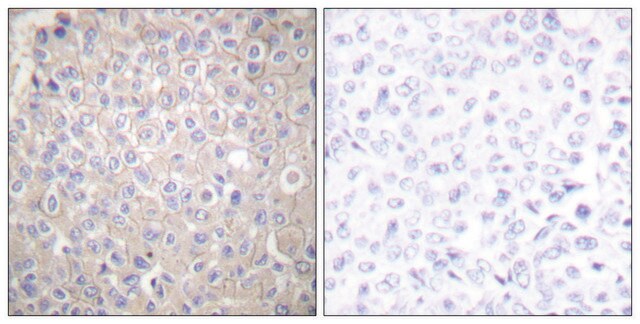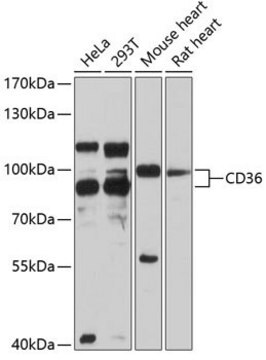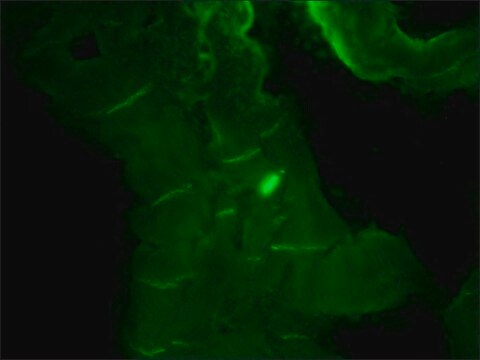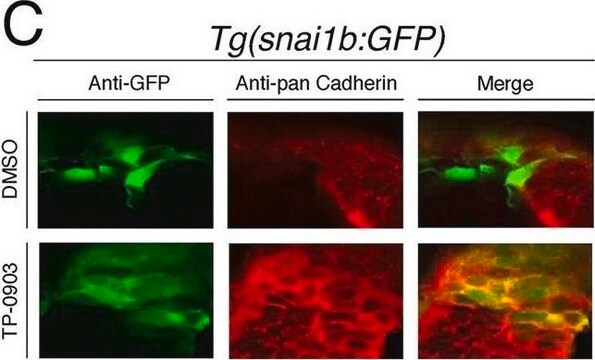Key Documents
SAB4200731
Anti-Pan-Cadherin antibody, Mouse monoclonal
clone CH-19, purified from hybridoma cell culture
Synonim(y):
Anti-Pan Cadherin
About This Item
Polecane produkty
pochodzenie biologiczne
mouse
forma przeciwciała
purified from hybridoma cell culture
rodzaj przeciwciała
primary antibodies
klon
CH-19, monoclonal
Postać
buffered aqueous solution
masa cząsteczkowa
~135 kDa
reaktywność gatunkowa
guinea pig, canine, frog, bovine, human, cat, monkey, rabbit, mouse, ferret, snake, hamster, chicken, Psammomys (sand rat), rat
stężenie
~1.0 mg/mL
metody
immunoblotting: 0.125-0.25 μg/mL using HeLa cell extract
immunofluorescence: 5-10 μg/mL using HeLa cells
immunohistochemistry: suitable
izotyp
IgG1
Warunki transportu
dry ice
temp. przechowywania
−20°C
docelowa modyfikacja potranslacyjna
unmodified
informacje o genach
human ... CDH1(999)
Opis ogólny
Specyficzność
Immunogen
Zastosowanie
- immunoblotting
- immunofluorescence
- immunohistochemistry
Działania biochem./fizjol.
Postać fizyczna
Przechowywanie i stabilność
Oświadczenie o zrzeczeniu się odpowiedzialności
Nie możesz znaleźć właściwego produktu?
Wypróbuj nasz Narzędzie selektora produktów.
Kod klasy składowania
10 - Combustible liquids
Temperatura zapłonu (°F)
Not applicable
Temperatura zapłonu (°C)
Not applicable
Certyfikaty analizy (CoA)
Poszukaj Certyfikaty analizy (CoA), wpisując numer partii/serii produktów. Numery serii i partii można znaleźć na etykiecie produktu po słowach „seria” lub „partia”.
Masz już ten produkt?
Dokumenty związane z niedawno zakupionymi produktami zostały zamieszczone w Bibliotece dokumentów.
Nasz zespół naukowców ma doświadczenie we wszystkich obszarach badań, w tym w naukach przyrodniczych, materiałoznawstwie, syntezie chemicznej, chromatografii, analityce i wielu innych dziedzinach.
Skontaktuj się z zespołem ds. pomocy technicznej








